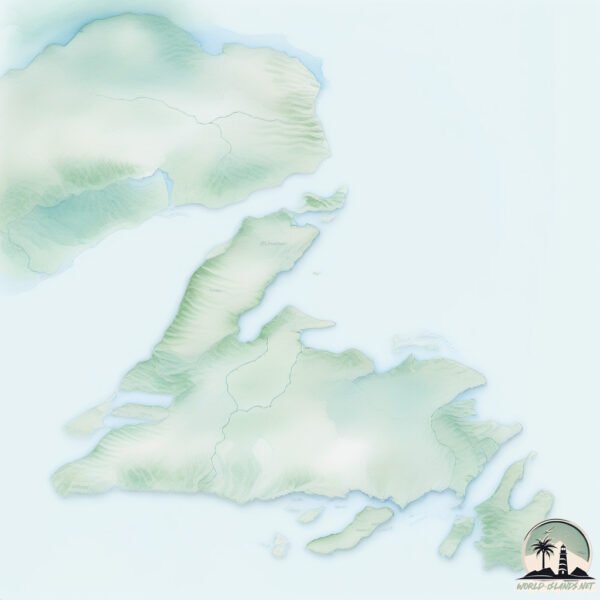Newfoundland is a Colossal Island spanning 108878 km² with a coastline of 12172 km.
Topography and nature of Newfoundland
Timezone: UTC-03:30Timezone places: America/St_JohnsMax. Elevation: 782 m Mean Elevation: 215 mVegetation: Open WoodlandTree Coverage: 47%
The mean elevation is 215 m. The highest elevation on the island reaches approximately 782 meters above sea level. The island is characterized by Plateau: Elevated flatlands rising sharply above the surrounding area, with a maximum elevation over 500 meters but a mean elevation less than 300 meters, forming unique highland areas on islands.
Dominating Vegetation: Open Woodland
Vegetation: 15 vegetation zones – Exceptionally Diverse Island
Infrastructure and Travelling to Newfoundland
Does the island have a public airport? yes .
Does the island have a major port? yes .
The mean population of Newfoundland is 5 per km². Newfoundland is Gently Populated. The island belongs to Canada .
The name of the island resonates across different cultures and languages. Here is how it is known around the world: Arabic: نيوفاوندلاند; German: Neufundland; Spanish: Isla de Terranova; French: Terre-Neuve; Portuguese: Terra Nova; Russian: Ньюфаундленд; Chinese: 纽芬兰岛
Continuing your journey, Sound Island is the next notable island, situated merely km away.
Newfoundland - On the Shores of Canada's Most Spectacular Coast | Free Documentary Nature
Newfoundland - On the Shores of Canada's Most Spectacular Coast | Nature Documentary Watch 'Alaska - The Last Frontier' ...
Newfoundland - On the Shores of Canada's Most Spectacular Coast | Free Documentary Nature
Newfoundland - On the Shores of Canada's Most Spectacular Coast | ...
Newfoundland - On the Shores of Canada's Most Spectacular Coast | Nature Documentary Watch 'Alaska - The Last Frontier' ...
NewFoundLand | A Short History of Newfoundland Island
Newfoundland is a large island located on the eastern coast of Canada. ...
Newfoundland is a large island located on the eastern coast of Canada. Its history spans back thousands of years, with evidence ...
TOP 21 Things To Do In Newfoundland
Travel Guide
Newfoundland, the easternmost province of Canada, is a captivating ...
Newfoundland, the easternmost province of Canada, is a captivating destination that offers a unique blend of natural beauty, rich ...
Canada is classified as Developed region: G7: Group of Seven – Major advanced economies, including Canada, France, Germany, Italy, Japan, the United Kingdom, and the United States. The level of income is High income: OECD.
News – Latest Updates and Headlines from Newfoundland
Stay informed with the most recent news and important headlines from Newfoundland. Here’s a roundup of the latest developments.
Loading...
Social Media Posts about Newfoundland
Loading...
Please note: The data used here has been primarily extracted from satellite readings. Deviations from exact values may occur, particularly regarding the height of elevations and population density. Land area and coastline measurements refer to average values at mean high tide.

